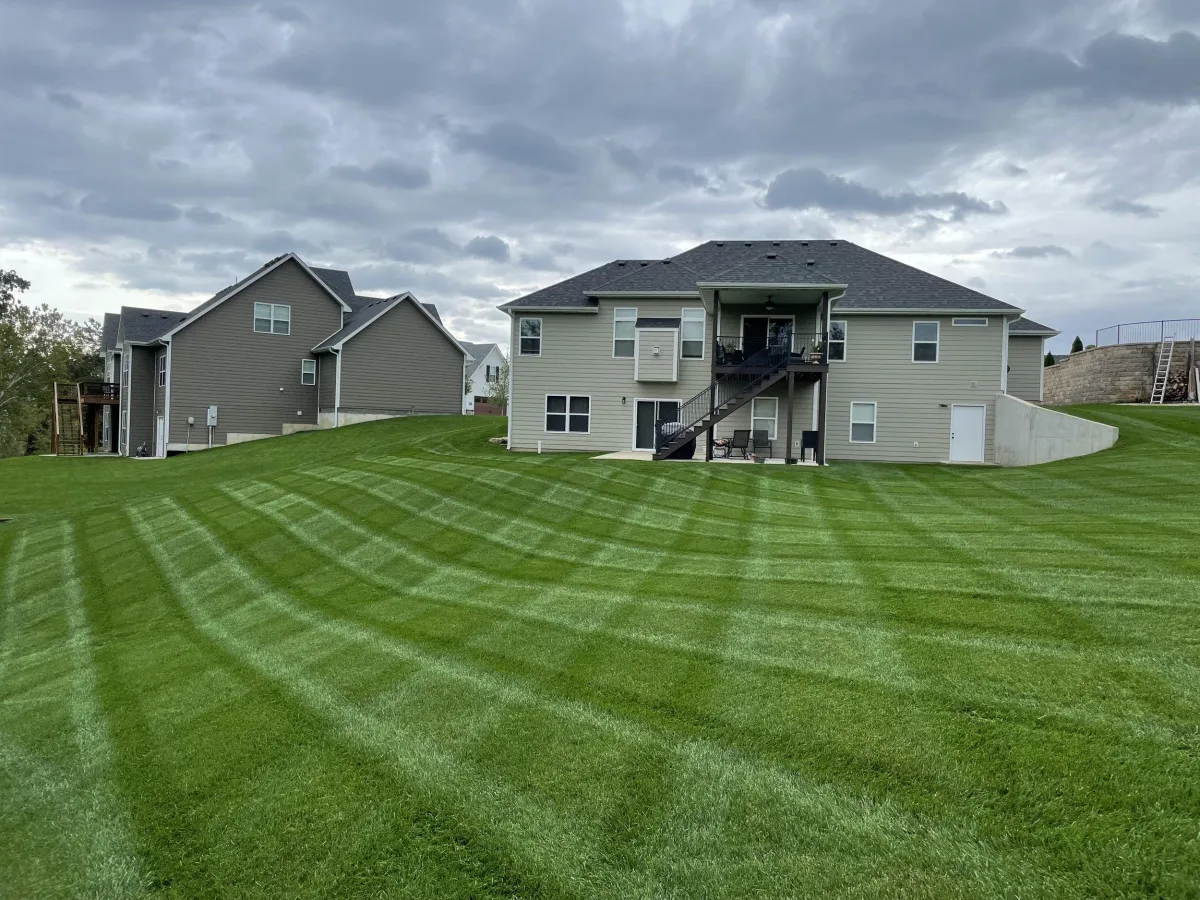Our Blogs

Pine Trees, Acidic Soil & Your Lawn: What You Need to Know (Northern Ontario Edition)
🌲 Pine Trees, Acidic Soil & Your Lawn: What You Need to Know (Northern Ontario Edition)
If you have pine trees on your property and you're struggling to grow grass underneath or nearby — you're not alone. Many Northern Ontario homeowners face this exact issue, and it often comes down to one thing: pine needles affecting soil conditions.
Let’s break down what’s actually happening, and how you can fix it.
🧪 Do Pine Needles Really Make Your Soil Too Acidic?
Short answer: Yes — but only over time and in the top layer of soil.
Pine needles are slightly acidic, and when they fall in large quantities and decompose without being removed, they can gradually lower the pH of your soil. This creates conditions that turfgrass doesn’t like, especially cool-season grasses that prefer a more neutral pH (around 6.5–7).
The result?
Thin, patchy grass. Moss. Weeds. Bare spots. And a lawn that just won’t fill in.
🌱 How to Fix Grass Growth Under Pine Trees
Here’s a simple, step-by-step way to improve grass growth around pine trees and rebalance the soil:
1. Rake & Remove Needles Regularly
Letting pine needles pile up year after year will only make things worse. Rake them out in spring and fall to reduce surface acidity and allow sunlight and water to reach the soil.
2. Test Your Soil (Optional but Recommended)
A soil pH test will tell you if your soil has become too acidic. If it's below 6.0, your grass will struggle to thrive.
3. Apply Lime
Lime (calcium carbonate) helps neutralize soil acidity. Apply garden lime to the affected area — usually in early spring or fall — based on label rates or soil test recommendations. This will raise the pH gradually and make nutrients more available to grass.
Pro Tip: Don’t overdo it. Lime works slowly and should be applied over time rather than all at once.
4. Aerate & Overseed
Aerating loosens compacted soil and improves water and nutrient flow. Follow that with overseeding using a shade-tolerant seed blend — especially under tree canopies where light is limited.
5. Topdress with Fresh Soil
In areas with lots of exposed roots or worn-down turf, apply a thin layer of fresh screened topsoil before seeding. This gives the grass a clean slate to grow into and helps lock in moisture.
🚫 What NOT to Do
Don’t lay sod directly over acidic, needle-filled soil — it won’t root properly.
Avoid using heavy fertilizer right away — correct the soil first.
Don’t try to grow sun-loving grass under full shade without adjusting your seed type and conditions.
✅ Best Grass Options for Areas Near Pines
Fescue blends (fine or creeping) – more shade- and drought-tolerant
Perennial ryegrass – fast-germinating and blends well with other cool-season grasses
Kentucky bluegrass – great for open areas nearby, but not ideal for deep shade
🧰 Need Help?
At MD Landscape & Design, we help homeowners across Northern Ontario restore tired lawns, fix problem areas, and build long-term solutions — whether it's reseeding, grading, or laying down a fresh layer of sod after soil prep.
If your lawn is struggling under pine trees, we’re happy to assess the area and recommend a plan to get your grass growing again.
Connect with us!

1155 Waterford St, Thunder Bay, ON, CA
info@mdlandscape.ca
Hours:
Monday-Friday from 09:00 AM-5:00 PM
Saturday -Sunday: Closed
COMPANY
INQUIRIES
LANDSCAPING AWARDS



